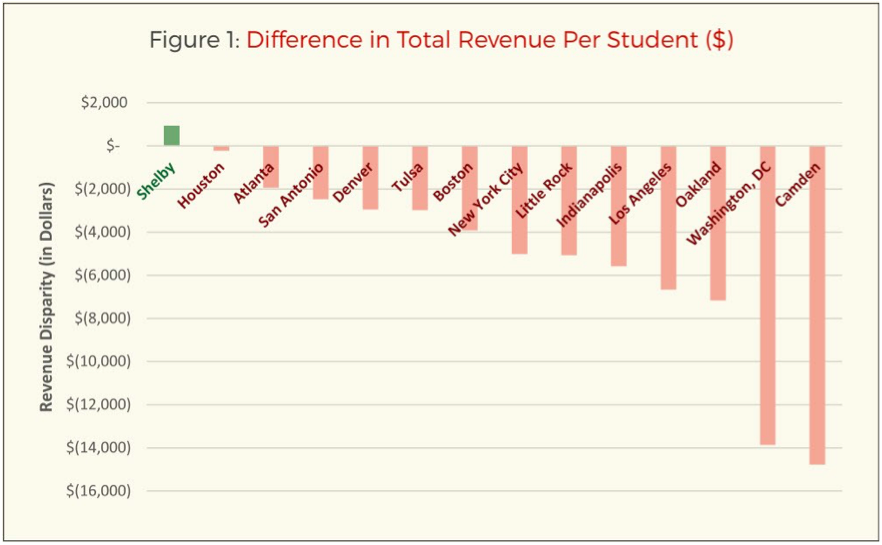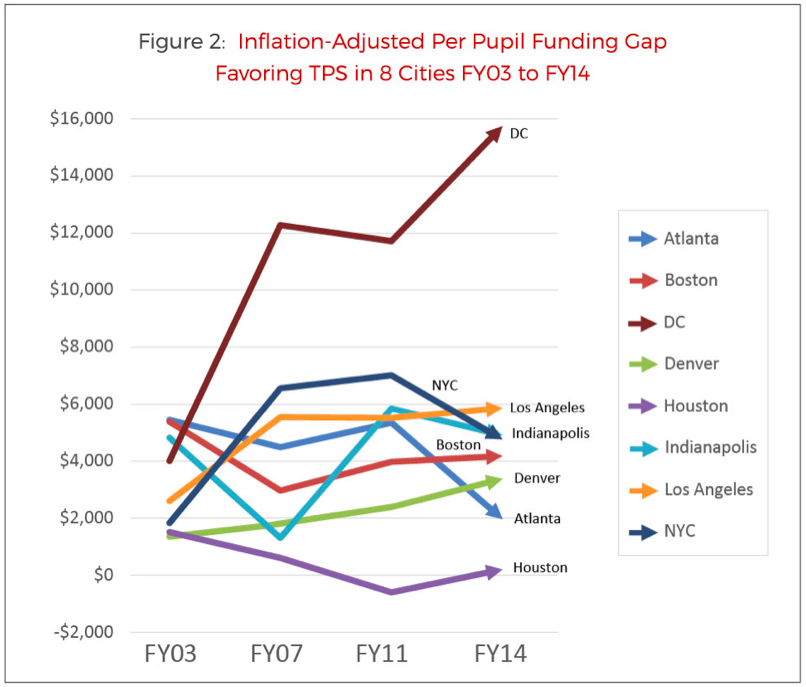The Colorado Legislature recently passed a bill that would allow charter schools access to the same local funding that traditional public schools in the state have long enjoyed. This bipartisan measure comes on the heels of a new national study by the University of Arkansas that found charters across the country receiving, on average, $5,721 less than nearby district schools in per-pupil funding.
The primary revenue culprit for this disparity? Local funding.
In doing this analysis, my colleagues and I examined funding for students in charters and district schools in fifteen metropolitan areas during the 2013–14 school year. As shown in Figure 1 (drawn from the report), in all but one of those locations, we found that children enrolled in public charter schools receive substantially less funding than those in district-operated schools. Across the country, that averages out to a shortfall of about 29 percent.

Source: Wolf, Maloney, May, and DeAngelis (2017). “Charter School Funding: Inequity in the City.” School Choice Demonstration Project, Department of Education Reform, University of Arkansas.
Critics of such analyses sometimes claim that funding disparities are due to differences in types of students, with district schools enrolling more students requiring additional educational resources. While the traditional schools in our study do enroll slightly more special needs children, these differences do not fully explain the funding gap.
As shown in Figure 2 (also drawn from the report), that gap has widened with time. In the eight cities for which we had longitudinal data, the funding disparity had grown by about 79 percent over a span of eleven years.

Source: Wolf, Maloney, May, and DeAngelis (2017). “Charter School Funding: Inequity in the City.” School Choice Demonstration Project, Department of Education Reform, University of Arkansas.
Why does this funding inequity continue to exist? While funding formulas differ across states, most local education dollars are only allocated to district schools. When a parent opts out of a traditional public school and into a public charter, their children often lose every single penny of local education funding. In over half of the cities covered in our study, children attending public charter schools received zero dollars in local funding. If state legislators wish to remedy this inequity, they need to focus on allowing local funds to follow each child, regardless of which public school they select.
This new analysis is important for decision-makers to consider, especially if they care about improving student outcomes through efficiently allocating educational funding. Just imagine what would happen to the education sector if families could choose which public school to send their children to, with funds equitably following them to that institution. In an educational system where schools have the incentive to spend money productively, funding matters for improving student outcomes. Schools would be rewarded for quality and efficiency, freeing up the resources necessary to improve the lives of millions of children around the nation.
Corey A. DeAngelis is a Distinguished Doctoral Fellow and Ph.D. student in Education Policy at the University of Arkansas in Fayetteville and a Policy Analyst at the Cato Institute. His research focuses on the effects of school choice programs on student achievement and non-academic outcomes.
The views expressed herein represent the opinions of the author and not necessarily the Thomas B. Fordham Institute.
